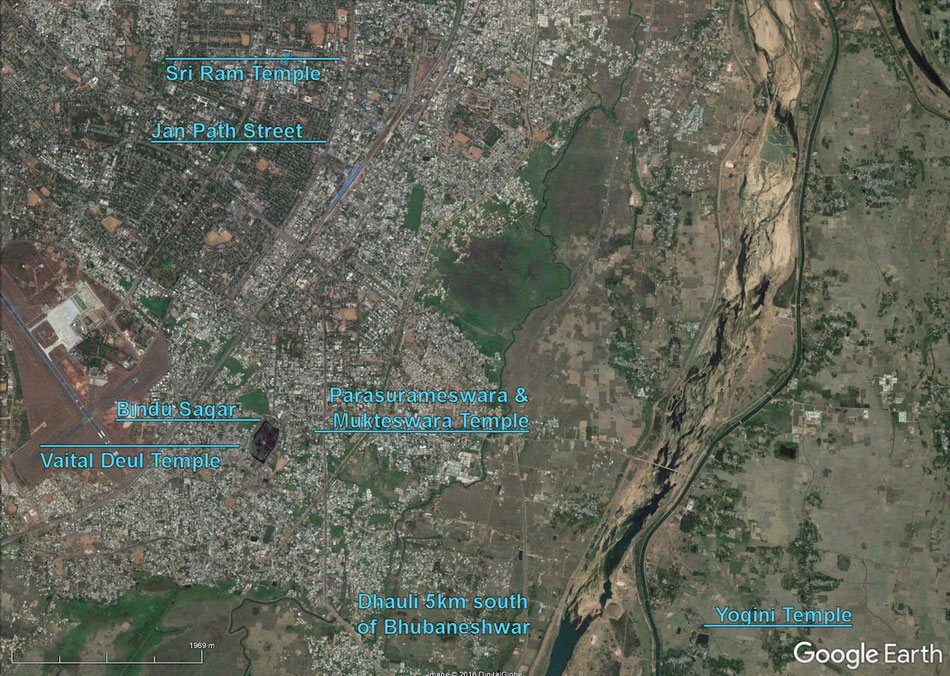India 2016 (Odisha) - Bhubaneshwar
In 1949 Bhubaneshwar became the capital of Odisha, replacing the former capital Cuttack located only a few km away - hence the name twin city. Modern Bhubaneshwar of 1949 was planned at the drafting table but soon expansion turned out to be faster than assumed at the start and empeded the planning standards. Despite Bhubaneshwar is known as a green city with many parks und broad streets. It is the economic and religious centre of East India with a population of about 1 million people.
Bindu Sagar

Bindu Sagar is an artificial tank in the old town of Bhubaneshwar near to the Lingaraja Temple.
In the middle of the lake is a shrine which is closely connected to Lord Lingaraja: During a festival in the month of may an effigy of lord Lingaraja the Shivalingam is brought to the shrine in the lake and cleansed in a ritual bath spiritually.
On all sides of the lake are bathing ghats for the pilgrims. The lake is fed by a natural spring from underground and with an artificial outlet the water level always remains constant. In the past it worked fine to keep the lake clean. But today it is one of the most polluted water bodies in the city - but still used by pilgrims for their rituals: According to legend Lord Shiva collected water from all holy places - and that way created the lake - to present the water to his thirsty wife Parvati. For a devotee a dip in the water washes away all sins and heals all ailments.
Another ritual that takes place in november at full moon is Boita Bandana.
Everywhere people celebrate the maritime tradition of Odisha. In rituals they put small boats with incense sticks and packed with fruit, flowers and coins
into the water. The boats are made of paper, styrofoam or in the traditional way from banana stem.
The holy water of Bindu Sagar with all the temples around the tank makes the celebrations here exceptional. Several TV stations provide an extensive live
coverage of the happenings at the lake.
Nandankanan Zoo

Nandankanan Zoo 20km north of Bhubaneshwar has a good reputation among the zoos in India and attracts about 2 million visitors each year. On 400ha, including a lake of 54ha size, it is home to more than 150 species.
For the visitor there are special attractions like a small toy train for kids and boating on the lake as well as a number of different safari tours (white tiger, lion, herbivore and bear safaris).
Probably most notable is the successfull breeding programme of white tigers. Currently in 2016 they have a stock of 8 white tiger, 3 male and 5 female. Other breeding programmes are for crocodiles (one of the cooperationg zoos is from Frankfurt, Germany) and Pangolins (Schuppentier).
Sunday Morning Street Festival

Currently the authorities of Bhubaneshwar try to establish a new festival that takes place each sunday morning during the dry season. For a few hours the main road of town is closed for traffic and opened to all sorts of activities and performances for the people.
The idea is to give the people a chance to relief of the omnipresent noise and stress of traffic and pollution. Here are some impressions from the street festival. It was the grand inauguration in 2016 after the monsoon.













































































































































